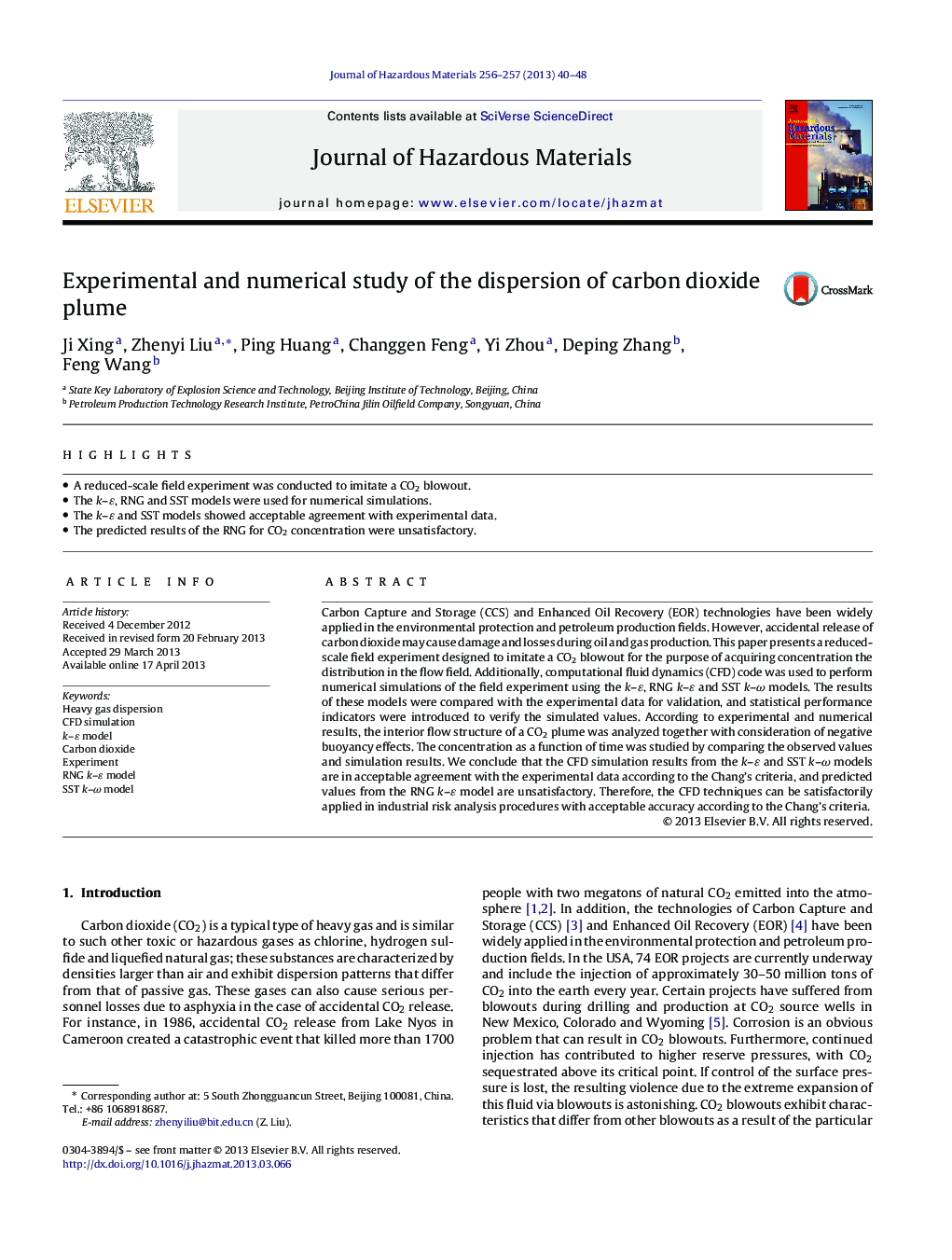| Article ID | Journal | Published Year | Pages | File Type |
|---|---|---|---|---|
| 577290 | Journal of Hazardous Materials | 2013 | 9 Pages |
Abstract
Carbon Capture and Storage (CCS) and Enhanced Oil Recovery (EOR) technologies have been widely applied in the environmental protection and petroleum production fields. However, accidental release of carbon dioxide may cause damage and losses during oil and gas production. This paper presents a reduced-scale field experiment designed to imitate a CO2 blowout for the purpose of acquiring concentration the distribution in the flow field. Additionally, computational fluid dynamics (CFD) code was used to perform numerical simulations of the field experiment using the k-ε, RNG k-ε and SST k-Ï models. The results of these models were compared with the experimental data for validation, and statistical performance indicators were introduced to verify the simulated values. According to experimental and numerical results, the interior flow structure of a CO2 plume was analyzed together with consideration of negative buoyancy effects. The concentration as a function of time was studied by comparing the observed values and simulation results. We conclude that the CFD simulation results from the k-ε and SST k-Ï models are in acceptable agreement with the experimental data according to the Chang's criteria, and predicted values from the RNG k-ε model are unsatisfactory. Therefore, the CFD techniques can be satisfactorily applied in industrial risk analysis procedures with acceptable accuracy according to the Chang's criteria.
Related Topics
Physical Sciences and Engineering
Chemical Engineering
Chemical Health and Safety
Authors
Ji Xing, Zhenyi Liu, Ping Huang, Changgen Feng, Yi Zhou, Deping Zhang, Feng Wang,
